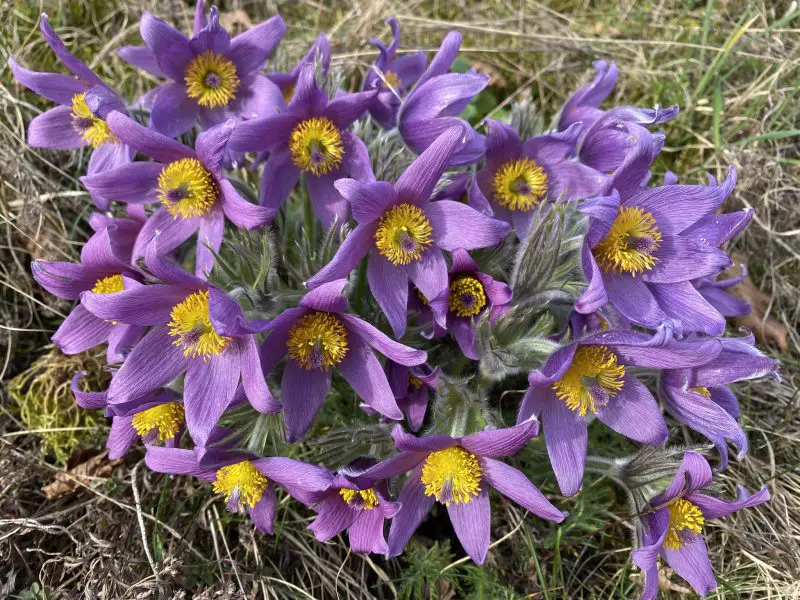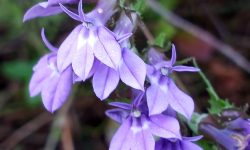Pasque Flower, with its delicate, bell-shaped blooms and finely textured foliage, brings a touch of elegance to early spring gardens. Native to meadows and prairies, this perennial thrives in well-drained soils and sunny locations. Its unique flowers, often purple with golden centers, provide an early source of nectar for pollinators, making it both a visually and ecologically valuable addition to any garden.
Understanding how to care for Pasque Flower ensures vibrant, long-lasting blooms each season. Gardeners must consider soil quality, sun exposure, watering practices, and seasonal maintenance to optimize growth. Proper care not only enhances flowering but also supports the plant’s natural resilience against pests and diseases. By learning its specific needs, gardeners can create a thriving environment that allows Pasque Flower to flourish year after year.
Understanding Pasque Flower

Pasque Flower is a hardy perennial renowned for its early spring blooms and finely divided, silvery-green foliage. Native to temperate meadows and prairies, it thrives in well-drained soils and sunny to partially shaded locations. Its bell-shaped flowers, often purple with golden centers, emerge before many other perennials, providing an early burst of color in the garden. Recognizing its growth patterns and natural preferences is essential for gardeners seeking vibrant, long-lasting blooms and healthy plant development.
The growth cycle of Pasque Flower begins in early spring when flower buds push through the soil, signaling the start of the growing season. Following flowering, the plant continues to develop foliage that stores energy in its root system, preparing for dormancy. Understanding this seasonal rhythm allows gardeners to implement appropriate watering, fertilization, and pruning practices. It also informs decisions about companion planting and naturalization, ensuring the plant thrives while complementing other garden species.
Beyond its aesthetic appeal, Pasque Flower plays a valuable ecological role. Its early blooms provide nectar for pollinators such as bees and butterflies emerging from winter dormancy. The plant also contributes to soil stabilization and supports biodiversity within garden beds or naturalized areas. By appreciating both the visual and ecological attributes of Pasque Flower, gardeners can cultivate an environment that encourages healthy growth, consistent flowering, and long-term sustainability. This knowledge forms the foundation for all subsequent care practices, ensuring Pasque Flower remains a striking and beneficial addition to any landscape.
Benefits of Growing Pasque Flower
Pasque Flower offers remarkable aesthetic benefits, making it a standout addition to early spring gardens. Its vibrant purple blooms with golden centers bring instant visual appeal, creating focal points in flower beds, borders, or rock gardens. The delicate, finely textured foliage adds a soft, silvery backdrop that complements other perennials and enhances overall garden design. Its early flowering period ensures that even in cooler months, gardeners enjoy color and interest when many other plants are still dormant.
Beyond visual charm, Pasque Flower supports ecological balance in the garden. Early blooms provide a vital nectar source for emerging pollinators such as bees and butterflies. By attracting these beneficial insects, the plant not only enhances pollination for surrounding species but also promotes a healthier, more resilient ecosystem. Its perennial nature means it returns year after year, contributing to the stability of local biodiversity and offering a reliable food source for pollinators during critical early-season periods.
In addition to aesthetics and ecological value, Pasque Flower is low-maintenance and adaptable. Once established, it tolerates a range of soil types and moderate drought, making it ideal for naturalized landscapes, rock gardens, or sunny borders. Its longevity and resilience reduce the need for frequent intervention, allowing gardeners to enjoy sustained beauty with minimal effort. Combining ornamental appeal, ecological benefits, and ease of care, Pasque Flower represents a versatile, rewarding choice for gardeners seeking both visual impact and sustainable gardening practices.
Choosing the Right Location
Selecting the optimal location is essential for ensuring Pasque Flower thrives and produces abundant blooms. This perennial prefers full sun to partial shade, with at least six hours of direct sunlight per day. Adequate sunlight encourages strong stems, healthy foliage, and vibrant flowers. In areas with hot summers, some afternoon shade can prevent leaf scorching and maintain bloom quality, while too little sunlight may result in weak growth and limited flowering.
Soil conditions play a critical role in plant health and flowering success. Pasque Flower thrives in well-drained, sandy or loamy soil enriched with organic matter. Good drainage is crucial, as overly wet or compacted soils can lead to root rot and fungal issues. Incorporating compost, leaf mold, or other organic amendments improves soil structure, enhances nutrient availability, and helps retain adequate moisture without causing waterlogging. Avoid heavy clay soils or low-lying areas prone to standing water, as these conditions can stress the plant and reduce bloom performance.
Spacing and garden design considerations further influence plant success. Pasque Flower forms clumps and gradually spreads through offsets, so providing sufficient room between plants ensures proper airflow and reduces disease risk. Consider companion planting with other early-spring perennials or groundcovers to create visually appealing combinations while supporting ecological balance. Thoughtful location selection, including sun exposure, soil quality, and spacing, sets the foundation for a healthy, vibrant, and long-lasting Pasque Flower display that enhances both the beauty and functionality of your garden.
Soil Preparation for Healthy Growth
Proper soil preparation is fundamental to establishing healthy Pasque Flower plants that produce vibrant blooms. Begin by assessing the soil’s pH and texture. Pasque Flower thrives in slightly acidic to neutral soil with a pH range of 6.0 to 7.5. If necessary, amend acidic soil with lime or alkaline soil with sulfur to achieve optimal conditions. Well-drained soil is essential, as waterlogged or compacted soil can lead to root rot and hinder plant development.
Incorporating organic matter enhances soil fertility, improves structure, and increases moisture retention without causing waterlogging. Compost, well-rotted manure, or leaf mold can be mixed into the planting area to provide essential nutrients and encourage healthy microbial activity. Spread a generous layer and gently mix it with the existing soil to create a loose, nutrient-rich environment that promotes root establishment. Well-prepared soil also supports strong foliage and robust flowering throughout the growing season.
Before planting, clear the area of weeds, rocks, and debris to reduce competition and prevent pest habitats. Lightly loosen the soil to ensure proper aeration and root penetration, but avoid excessive tilling that could disturb soil layers. Proper soil preparation not only ensures immediate growth success but also establishes long-term resilience, enabling Pasque Flower to thrive season after season. By carefully preparing the planting site, gardeners set the stage for abundant, healthy blooms and a visually appealing, sustainable garden landscape.
Watering Needs Throughout the Season
Proper watering is essential for Pasque Flower to establish strong roots, healthy foliage, and vibrant blooms. During the early growth phase in spring, the soil should be kept evenly moist but never waterlogged. Consistent moisture supports the development of flower buds and ensures that young shoots grow vigorously. Overwatering, however, can lead to root rot, fungal issues, and weak plant growth, so it is important to monitor soil conditions carefully before adding water.
Once the plant is established, watering should be deep but infrequent, allowing water to reach the root zone while preventing surface saturation. Morning watering is ideal, giving foliage time to dry throughout the day and reducing the risk of fungal diseases. Applying mulch around the base of the plants can help retain adequate moisture, regulate soil temperature, and suppress weed growth. This combination of deep watering and protective mulch creates an environment that supports consistent growth and encourages prolonged flowering.
During dormancy after flowering, Pasque Flower requires minimal watering. Reducing water at this stage prevents excess moisture from affecting the bulbs or promoting disease. Maintaining this seasonal watering balance ensures the plant remains healthy throughout the year, with strong blooms in spring and well-stored energy for the next growing season. Proper watering practices, combined with good soil preparation and sunlight exposure, are key to long-term success in cultivating vibrant and resilient Pasque Flower displays.
Fertilizing Pasque Flower for Strong Blooms
Fertilization is a critical component in promoting vigorous growth and abundant flowering in Pasque Flower. Applying a balanced, slow-release fertilizer in early spring supports the development of strong stems, lush foliage, and vibrant blooms. Nutrients such as nitrogen, phosphorus, and potassium provide essential support for overall plant health. Organic fertilizers like well-rotted compost or granular plant food also enhance soil structure and microbial activity while nourishing the plants gradually.
During the flowering period, careful fertilization encourages sustained bloom production without overwhelming the plant with excessive nitrogen, which can lead to lush foliage but fewer flowers. A light top-dressing of compost or a specialized bloom-enhancing fertilizer near the base of the plant provides additional nutrients for flower formation. Fertilizing in moderation ensures that the energy is directed toward blooms rather than unnecessary leaf growth, maintaining the delicate balance required for optimal flowering performance.
After the flowering season, a final light application of fertilizer helps replenish the root system and prepare the plant for dormancy. Supporting energy storage in the roots ensures a strong resurgence in the following spring, allowing Pasque Flower to consistently produce healthy foliage and spectacular blooms. Combining proper fertilization with well-drained soil, appropriate watering, and adequate sunlight maximizes plant health and bloom longevity, making it an essential practice for gardeners seeking thriving and visually striking Pasque Flower displays year after year.
Seasonal Care Guide for Pasque Flower
Spring Care
Spring marks the awakening of Pasque Flower from winter dormancy. As shoots emerge, it is important to remove winter mulch and clear debris, allowing sunlight to reach young growth. The soil should be checked for moisture, as evenly moist soil encourages robust stem and leaf development. Fertilizing with a balanced, slow-release fertilizer supports healthy foliage and promotes early blooms. Deadheading spent flowers not only prolongs flowering but also prevents uncontrolled self-seeding, which can disrupt garden design if not managed carefully.
Spring is also a time to monitor for pests and diseases. Slugs, snails, and fungal pathogens can appear early in the season, and timely preventive measures such as applying organic slug deterrents or ensuring good airflow around plants can protect new growth. By paying close attention to soil, light, nutrition, and pest management, gardeners create an environment where Pasque Flower can establish a strong foundation, thrive during its peak growing season, and display vibrant, long-lasting blooms.
Summer Care
During summer, Pasque Flower requires consistent care to maintain plant health and vigor. Established plants are moderately drought-tolerant but benefit from occasional deep watering during extended dry periods. Mulching around the base retains moisture, moderates soil temperature, and suppresses weeds, which helps reduce stress on the plant during hotter months. Proper mulching also protects the root system and prevents the soil from becoming overly compacted.
Pruning and deadheading spent flowers in summer is important to redirect energy toward root development and future blooms. Removing damaged or yellowing foliage prevents disease spread and promotes airflow. Gardeners should also monitor for summer pests such as slugs or snails, which thrive in warm, humid conditions. Summer care emphasizes sustaining plant health rather than promoting new blooms, ensuring Pasque Flower remains strong, resilient, and prepared to enter the autumn transition in optimal condition.
Autumn Care
Autumn shifts the focus to preparing Pasque Flower for winter dormancy. As temperatures drop, gradually reduce watering to allow the plant to harden off naturally. Removing spent foliage and cutting back old stems minimizes fungal disease risk and keeps the garden tidy. Leaf litter can be used as a light mulch to further protect soil and plant crowns.
Adding a layer of organic mulch after the first frost is beneficial for insulation, retaining residual moisture, and shielding soil from temperature fluctuations. Companion planting with low-growing groundcovers can provide additional protection for emerging shoots. Autumn care is essential for preserving plant energy, ensuring that Pasque Flower can emerge vigorously in spring, produce strong stems, and sustain vibrant flowers. Thoughtful preparation during this season directly impacts plant health and flowering success for the following year.
Winter Care
Winter care for Pasque Flower focuses on preservation rather than growth. Dormant plants need protection from extreme cold and frost, which can be achieved by maintaining an adequate layer of mulch over crowns and root zones. Avoid excess watering during winter, as waterlogged conditions can cause root rot and compromise plant survival.
Gardeners should also monitor for potential rodent activity, which may damage bulbs or crowns during the dormant period. Snow or frost can be gently brushed off plants to prevent damage to emerging shoots beneath the mulch. Providing a stable, protected winter environment ensures that Pasque Flower survives adverse conditions and enters spring ready to produce healthy foliage and abundant blooms. Proper winter care complements the seasonal routine and contributes to long-term success in any garden setting.
Common Pests and Diseases
Pests Affecting Pasque Flower
Pasque Flower is generally hardy, but several pests can impact its health if not managed properly. Slugs and snails are common during wet spring and summer periods, feeding on young shoots and tender leaves. These pests can create holes in foliage, weaken plants, and reduce flowering potential. Early detection is key: inspecting plants regularly, especially during damp conditions, helps identify infestations before serious damage occurs.
Management strategies include hand-picking pests, using organic deterrents, and maintaining proper spacing to improve airflow and reduce damp microenvironments. Encouraging natural predators such as birds and ground beetles also helps control pest populations. Maintaining healthy plants through adequate watering, proper fertilization, and mulching can increase resistance to pest damage. By combining vigilant monitoring with proactive prevention, gardeners ensure that Pasque Flower remains healthy and capable of producing abundant blooms.
Diseases Affecting Pasque Flower
Fungal and bacterial diseases can occasionally affect Pasque Flower, particularly in poorly drained or overcrowded conditions. Root rot, powdery mildew, and leaf spot are among the most common problems. Root rot develops in waterlogged soils, causing stems to weaken and leaves to yellow, while powdery mildew appears as white powdery growth on foliage, reducing photosynthesis and overall plant vigor. Leaf spot produces dark lesions, which may lead to premature leaf drop and stress.
Preventive measures include planting in well-drained soil, ensuring adequate spacing between plants, and removing infected foliage promptly. Avoiding overhead watering and providing sufficient sunlight and air circulation can minimize the incidence of fungal infections. Regularly inspecting plants for early disease symptoms allows timely intervention, such as applying organic fungicides or adjusting cultural practices. Proper disease management ensures Pasque Flower maintains strong roots, healthy foliage, and vibrant flowers throughout the growing season.
Propagation Methods for Pasque Flower
Pasque Flower can be propagated through seeds, division, or root cuttings, each method offering unique advantages. Seed propagation is ideal for gardeners who want to increase plant numbers naturally and experiment with slight variations in flower color or form. Sow fresh seeds in well-drained soil in early spring or fall. Cold stratification, simulating winter conditions, improves germination rates. Patience is essential, as seedlings may take one to two years to reach flowering maturity.
Division is another effective method, particularly for established clumps. This technique involves carefully lifting mature plants after flowering or during dormancy, separating root sections with healthy crowns, and replanting them in prepared soil. Division encourages rejuvenation of older plants, promotes vigorous growth, and allows gardeners to control clump size while maintaining a consistent flower display. Regular division every few years prevents overcrowding and ensures continued robust blooming.
Root cuttings provide a more controlled propagation method for replicating exact parent plant characteristics. During dormancy, select healthy roots, cut them into sections, and plant horizontally in well-draining soil. Maintain moderate moisture until shoots emerge, signaling successful establishment. This method produces genetically identical plants, preserving desirable traits such as flower color, size, or growth habit. Combining these propagation techniques allows gardeners to expand their Pasque Flower collection, maintain plant health, and enjoy abundant, vibrant blooms season after season.
Mistakes to Avoid and How to Solve
Overwatering and Poor Drainage
One of the most common mistakes when caring for Pasque Flower is overwatering or planting in poorly drained soil. Excess moisture can quickly lead to root rot, weakening or killing the plant. Yellowing leaves are often misinterpreted as drought stress, causing gardeners to add more water, which only exacerbates the problem. Excess water also encourages fungal growth, making the plant more susceptible to diseases such as powdery mildew or leaf spot.
To address this, ensure the planting site has well-drained soil and avoid low-lying, waterlogged areas. Raised beds, sandy amendments, or incorporating organic matter can enhance drainage. Water deeply but infrequently, checking soil moisture before each application. Mulching helps retain necessary moisture without causing waterlogging. Learning to balance water requirements is essential for healthy root development, vibrant foliage, and long-lasting blooms. Proper drainage is the cornerstone of resilient and thriving Pasque Flower plants.
Neglecting Spread Control
Pasque Flower is a perennial with a natural tendency to self-seed, which can be both an advantage and a challenge for gardeners. While this characteristic allows it to create beautiful naturalized drifts in meadows and informal gardens, it can become problematic in structured or tightly planned landscapes. Unchecked, seedlings may appear in unwanted areas, competing with other plants for nutrients, sunlight, and space. Gardeners who overlook this growth habit often find that their carefully arranged garden beds become overcrowded, disrupting overall design and reducing the vigor of individual plants.
To manage spread effectively, proactive measures are essential. Regularly deadheading spent flowers prevents excessive seed dispersal, keeping the plant contained within designated areas. If seedlings emerge in unintended spots, thin them out promptly to avoid overcrowding and allow the healthiest plants to thrive. Installing root barriers or planting Pasque Flower in raised or contained beds can also help control expansion. Understanding and managing its vigorous growth habit allows gardeners to enjoy its stunning blooms without letting it dominate other garden species, maintaining both aesthetic appeal and plant health throughout the season.
Improper Pruning and Maintenance
Improper pruning and lack of regular maintenance are common mistakes that can significantly affect the health and appearance of Pasque Flower. Neglecting to remove spent flowers allows the plant to divert energy into seed production rather than sustaining continuous blooms. Over time, this can result in reduced flowering and a less vibrant display. Additionally, leaving dead or damaged foliage in place can create a haven for pests and diseases, further stressing the plant and compromising its overall vigor. Gardeners who prune at the wrong stage or too aggressively risk damaging stems, reducing energy reserves, and negatively impacting next season’s growth.
To maintain optimal health and aesthetics, perform light pruning after the flowering season, removing spent blooms and any damaged or yellowing leaves. Deadheading encourages prolonged bloom periods while keeping the plant tidy and visually appealing. Seasonal maintenance also involves monitoring for pest infestations and adjusting care practices as needed, such as optimizing watering and soil conditions. Consistent, thoughtful pruning ensures that Pasque Flower remains vigorous, produces abundant blooms, and contributes to a well-kept, attractive garden display throughout the growing season and beyond.
Pruning and Deadheading Techniques
Pruning and deadheading are essential practices for maintaining the health and aesthetic appeal of Pasque Flower. Regular deadheading of spent blooms encourages the plant to redirect energy from seed production into foliage and root development. This promotes continuous flowering and helps maintain a tidy, well-structured plant. Deadheading is best done using clean, sharp scissors or pruning shears, cutting just above the next set of healthy leaves or buds. Consistent removal of spent flowers prevents overcrowding and reduces the risk of fungal infections, which can thrive in decaying plant matter.
Pruning should be done thoughtfully to support plant growth without causing unnecessary stress. Light pruning after the flowering season removes old or damaged stems, encourages air circulation, and helps the plant maintain a balanced structure. Avoid cutting too aggressively or during periods of active growth, as this may weaken the plant and reduce bloom potential in the following season. By carefully timing pruning and focusing on selectively removing stems, gardeners can shape Pasque Flower for a more visually appealing display while preserving its natural growth habit.
Additionally, seasonal maintenance enhances long-term vigor and bloom quality. Combining deadheading and pruning with proper watering, fertilization, and soil care ensures the plant remains resilient against pests, diseases, and environmental stress. Pruning techniques also play a role in controlling the plant’s spread, preventing overcrowding, and promoting healthy clump formation. By mastering these techniques, gardeners can enjoy abundant, vibrant blooms year after year while keeping their Pasque Flower beds attractive, well-maintained, and ecologically balanced.
Companion Planting with Pasque Flower
Companion planting enhances both the aesthetic appeal and ecological health of a garden featuring Pasque Flower. Selecting compatible plants can create a harmonious visual display while supporting beneficial interactions between species. Pasque Flower pairs well with other early-blooming perennials such as Siberian Squill, Crocus, and Primrose, which complement its soft, delicate flowers and provide continuous color throughout the spring season. Combining these plants not only extends the visual interest of the garden but also promotes pollinator activity, benefiting all nearby flowering species.
In addition to visual appeal, companion planting can improve plant health and resilience. Taller perennials or ornamental grasses planted nearby can offer light shading and wind protection, reducing stress on Pasque Flower and moderating soil moisture levels. Low-growing groundcovers such as creeping thyme or mosses can help suppress weeds while maintaining well-drained soil, which Pasque Flower prefers. Strategically grouping plants with similar water and sunlight requirements ensures that each species thrives without competition for essential resources.
Companion planting also supports ecological balance by attracting pollinators and beneficial insects that naturally deter pests. Bees, butterflies, and predatory insects such as ladybugs are more likely to visit diverse plantings, enhancing pollination and controlling harmful pests. By thoughtfully selecting companions, gardeners create a visually appealing, productive, and sustainable garden environment. This approach maximizes bloom potential, encourages healthy growth, and ensures that Pasque Flower flourishes alongside complementary species year after year.
Habitat and Naturalizing Tips
Creating a suitable habitat is essential for Pasque Flower to thrive and naturalize successfully in your garden. This perennial prefers well-drained, sandy, or loamy soils with full sun exposure, although it can tolerate partial shade. Choosing the right location ensures strong root development and healthy foliage, which are crucial for abundant blooms. Naturalizing Pasque Flower in rock gardens, meadows, or wildflower borders allows it to establish a self-sustaining presence while blending seamlessly with other early-spring blooms.
When naturalizing, consider planting in groups rather than isolated individuals. Clusters of three to five plants create a more visually striking display and improve pollination opportunities by attracting bees and other beneficial insects. Once established, Pasque Flower will gradually spread via self-seeding, forming dense, attractive drifts over time. Regular monitoring during the first few years helps ensure that seedlings are thriving without overtaking surrounding plants, maintaining a balanced garden composition.
Mulching and minimal disturbance are key to successful naturalization. A thin layer of organic mulch retains soil moisture, protects roots from temperature fluctuations, and suppresses weeds. Avoid over-fertilization, as excessive nutrients can favor leafy growth over blooms. By mimicking natural conditions and allowing the plant to grow in its preferred habitat, gardeners can enjoy a low-maintenance, resilient, and ecologically supportive planting. Pasque Flower’s naturalizing ability not only enhances garden aesthetics but also provides early-season food sources for pollinators, contributing to a healthier, more balanced ecosystem.
FAQ About Pasque Flower Care
What is the best soil for Pasque Flower?
Pasque Flower thrives in well-drained, sandy or loamy soils with moderate fertility. Avoid heavy clay or waterlogged conditions, as they can cause root rot. Adding organic matter improves drainage and encourages strong root growth. Well-prepared soil ensures vibrant foliage and abundant blooms throughout the growing season.
How much sunlight does Pasque Flower need?
Pasque Flower prefers full sun to partial shade. At least six hours of direct sunlight daily promotes strong stems and vibrant flowers. In hotter regions, some afternoon shade helps prevent leaf scorch and reduces moisture stress. Proper sunlight exposure is key to healthy growth and long-lasting blooms.
When should I prune or deadhead Pasque Flower?
Deadheading spent flowers immediately after blooming encourages prolonged flowering and prevents excessive self-seeding. Light pruning after the flowering season removes damaged or yellowing foliage, maintains plant shape, and supports overall health. Consistent maintenance ensures continued vigor and a tidy, attractive appearance throughout the year.
How do I control pests and diseases?
Regularly inspect plants for slugs, snails, or fungal infections like powdery mildew. Hand-pick pests, use organic deterrents, and maintain good air circulation. Proper watering and avoiding overcrowding reduce disease risk. Early intervention prevents damage and keeps Pasque Flower healthy, ensuring strong foliage and vibrant blooms.
Can Pasque Flower naturalize in a garden?
Yes, Pasque Flower is ideal for naturalizing in rock gardens, meadows, or wildflower borders. Plant in clusters and allow self-seeding to gradually create dense, attractive drifts. Minimal disturbance, proper soil, and adequate sunlight help establish a resilient, low-maintenance planting that enhances aesthetics and supports pollinators.
Conclusion
Pasque Flower is a stunning early-spring perennial that enhances any garden with vibrant, long-lasting blooms. By understanding its light, soil, watering, and fertilization requirements, gardeners can maintain healthy growth and abundant flowers. Pruning, deadheading, and companion planting further optimize its beauty and ecological value. Proper seasonal care and awareness of common pests ensure resilience and longevity. Incorporating Pasque Flower into naturalized or formal garden beds provides both visual appeal and ecological benefits. Following these expert tips guarantees thriving, sustainable blooms and a captivating display each spring.






